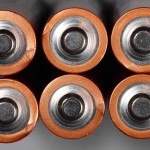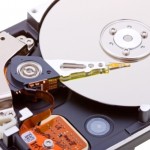E-WASTE RE-USE: SUCCESS FACTORS & BARRIERS IDENTIFIED
E-WASTE RE-USE: SUCCESS FACTORS & BARRIERS IDENTIFIED
Two of the biggest barriers for organisations refurbishing waste electrical and electronic equipment (WEEE) for re-use are the availability of sufficient quantities of good quality used equipment and a lack of legislation that encourages or enforces re-use. These, and other barriers as well as success factors, were identified in a recent survey of re-use organisations in Africa, Latin America, North America and Europe.

As a result of economic development and rapid advances in technology, enormous quantities of WEEE, or e-waste, are generated globally. Equipment that still has a functional lifespan is often discarded early and sent for recycling as newer products come on the market. Re-using e-waste helps extend a product’s useful life and reduces the demand for resources to produce EEE. Re-use is part of the sustainable management of e-waste and contributes to the goal of resource conservation, such as that under the EU’s Waste Framework Directive.
This study explored the barriers that hamper re-use practices and the factors that help organisations successfully refurbish and redistribute used equipment. The researchers interviewed senior managers from 28 non-profit and for-profit re-use organisations located in Africa, Latin America, North America and Europe that handle information and communication technologies (ICT) equipment or large household appliances. From these interviews, the researchers grouped together specific barriers and success factors into general categories, and the re-use organisations then ranked the barriers and success factors according to their importance.

The top set of barriers relates to obtaining enough used equipment. Sourcing sufficient quantities of good-quality used equipment is a major concern. Some of the reasons for this include current legislation that does not support re-use organisations by providing adequate financial incentives for and enforcement of e-waste re-use. In addition, re-use options are not being incorporated into collection and recycling initiatives. Furthermore, some equipment manufacturers do not allow their products to be re-used, to avoid competition with new products. Instead, these manufacturers require used equipment to be recycled, even when it could be re-used.
The second set of barriers relates to the informal and illegal disposal of e-waste. This creates a negative public perception of re-using e-waste. For example, workers’ health and the environment could be harmed when informal collectors send e-waste to developing countries with inadequate health and safety controls. Issues related to regulations, standards and product design are grouped together in the third set of barriers. It can be costly for organisations, particularly those that operate globally, to comply with different standards and regulations, especially as there is no internationally recognised re-use standard. Although not considered a major barrier, many products are not designed with re-use in mind.

The top four factors identified that contributed to successful re-use of e-waste were: a high quality refurbishment process ensuring good quality, reliable products; being in charge of quality control; accessing good quality used equipment; and ensuring that the confidential data of previous users was safely destroyed, as well as protecting the manufacturer’s brand. All of these factors help counteract the negative perception of re-used e-waste created by the informal and non-compliant participants in the e-waste sector. Other success factors include effective management of stakeholder relationships, for both suppliers and receivers of e-waste, and a transparent and traceable chain from the collection of e-waste through preparation for re-use, distribution and eventual recycling or disposal at a product’s end-of-life.
In the EU, the difficulties concerning re-use have been identified during the recast of the WEEE Directive and the new WEEE Directive 2012/19/EU therefore includes provisions for the promotion of re-use, for example: ‘Member States shall promote that, prior to any further transfer, collection schemes or facilities provide, where appropriate, for the separation at the collection points of WEEE that is to be prepared for re-use from other separately collected WEEE, in particular by granting access for personnel from re-use centres.’ (Article 6).
Source: Kissling, R., Coughlan, D., Fitzpatrick, C. et al. (2013). Success factors and barriers in re-use of electrical and electronic equipment. Resources, Conservation and Recycling. DOI.org/10.1016/j.resconrec.2013.07.009.
